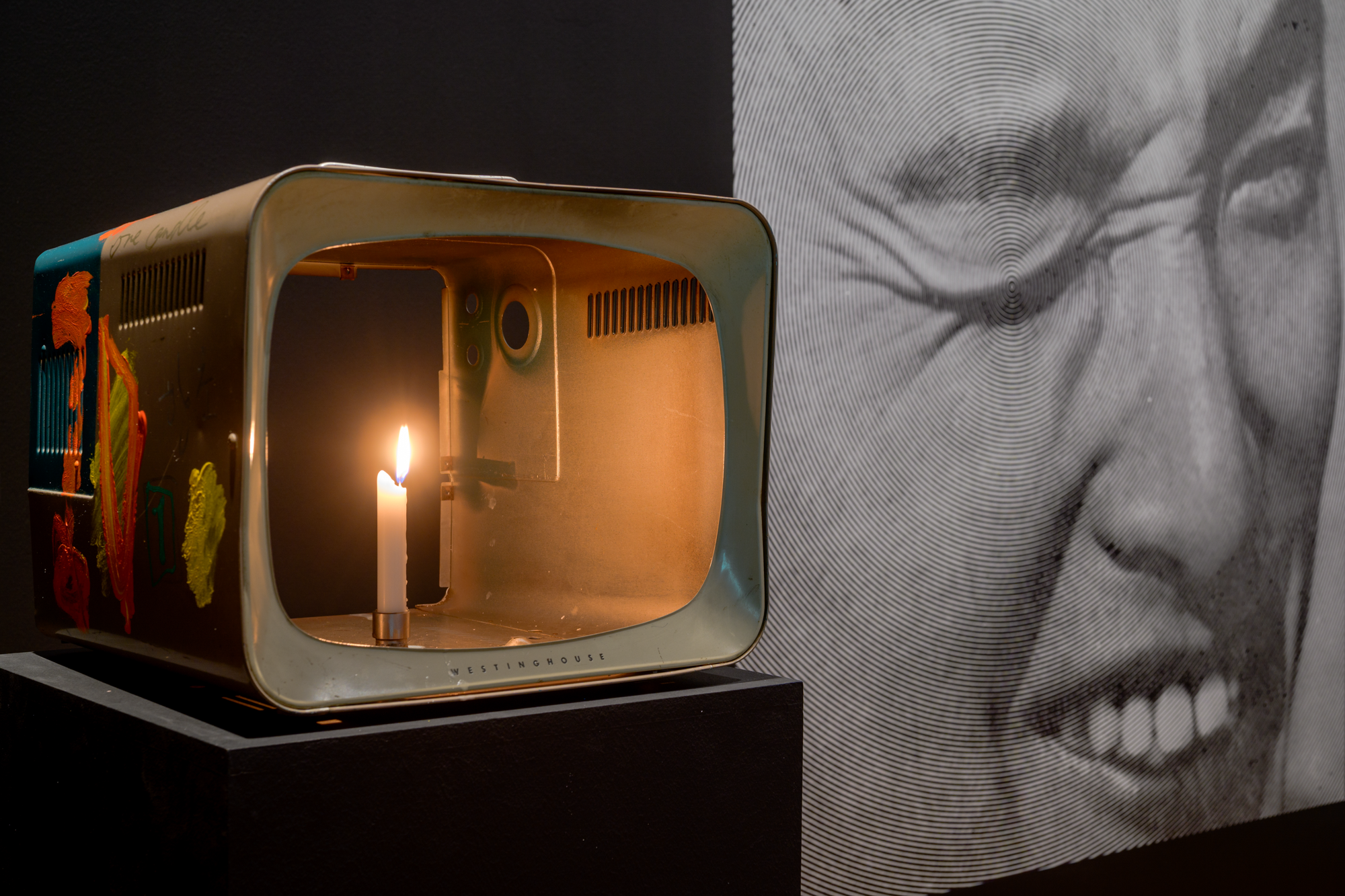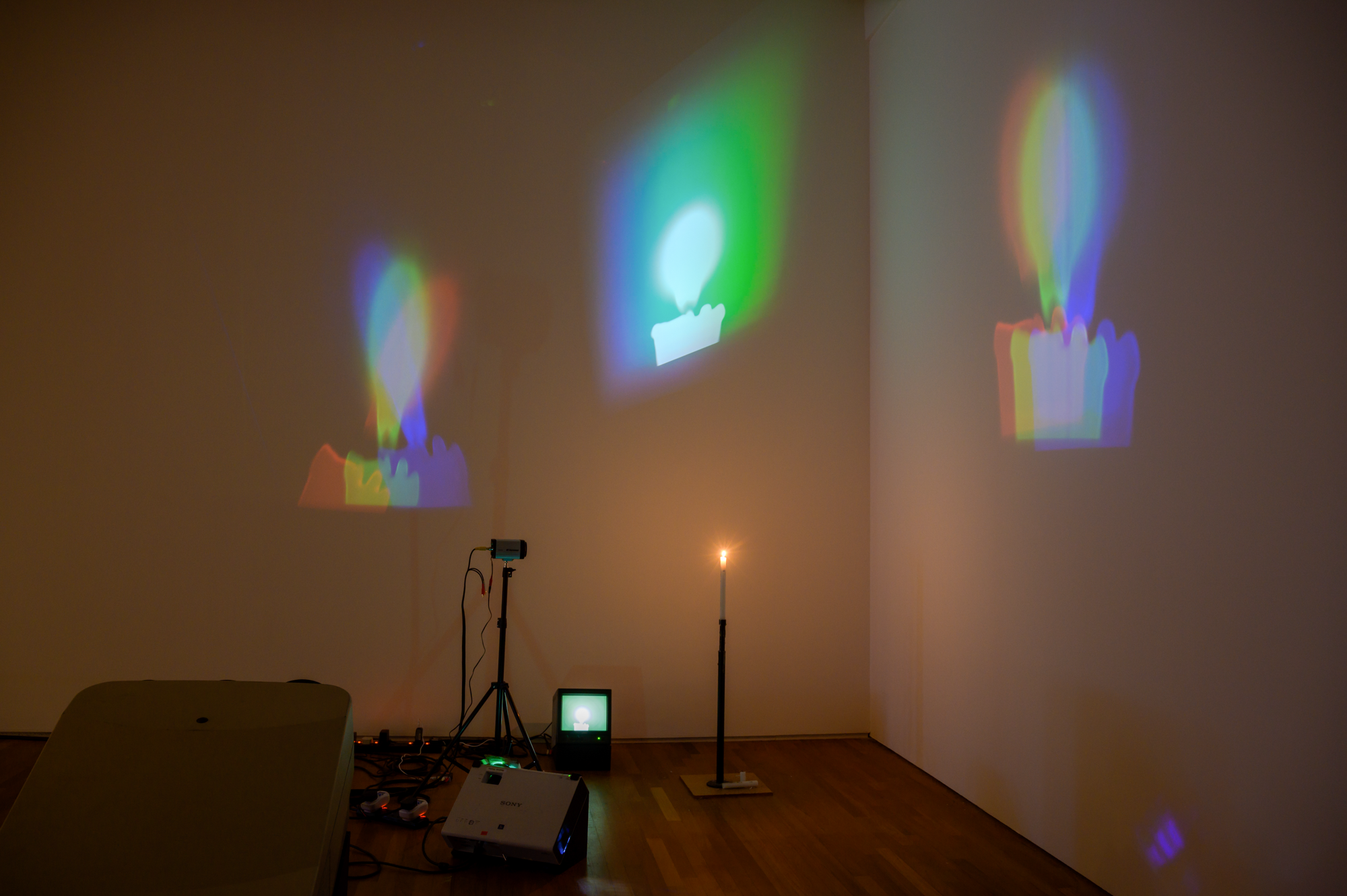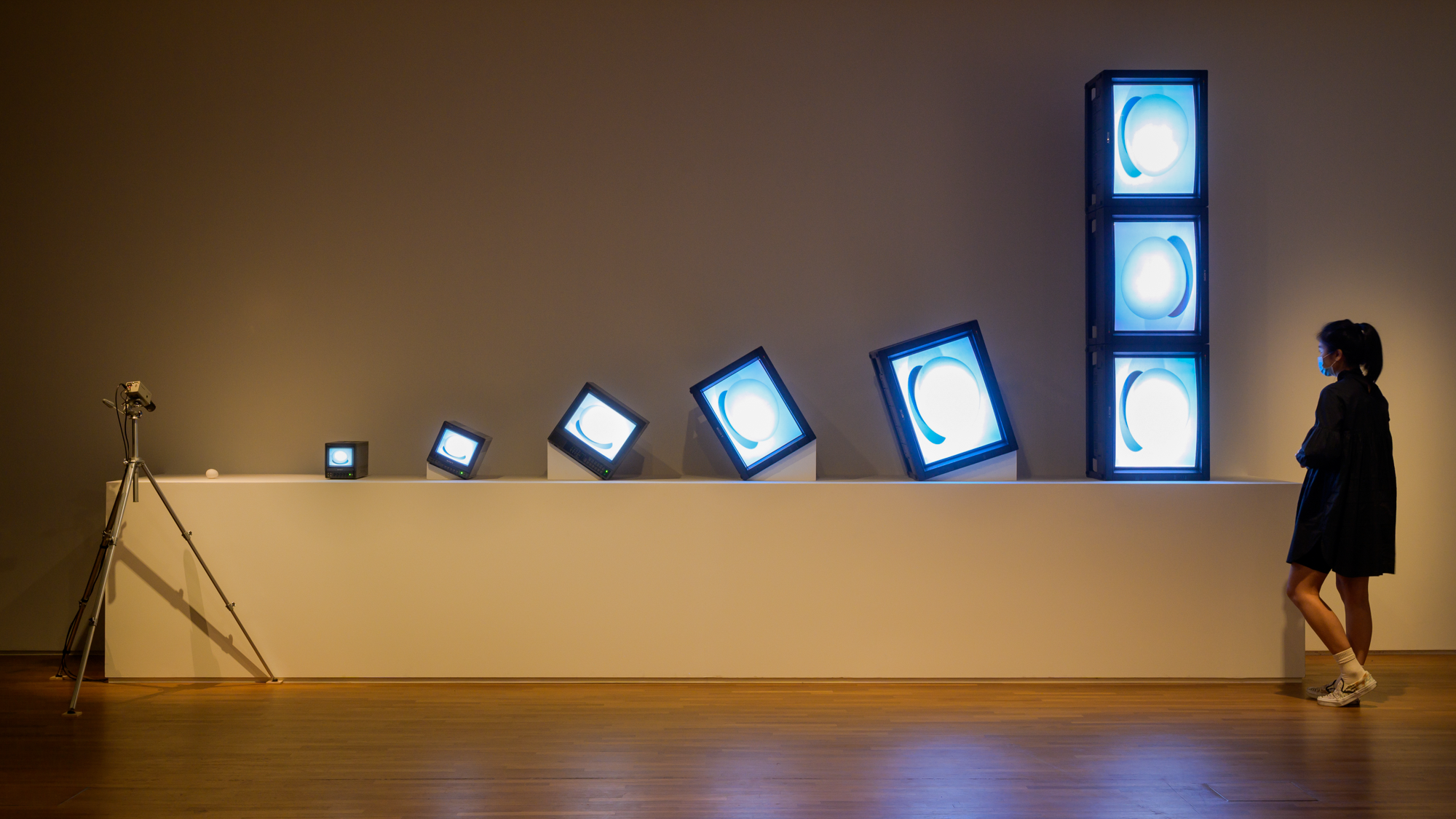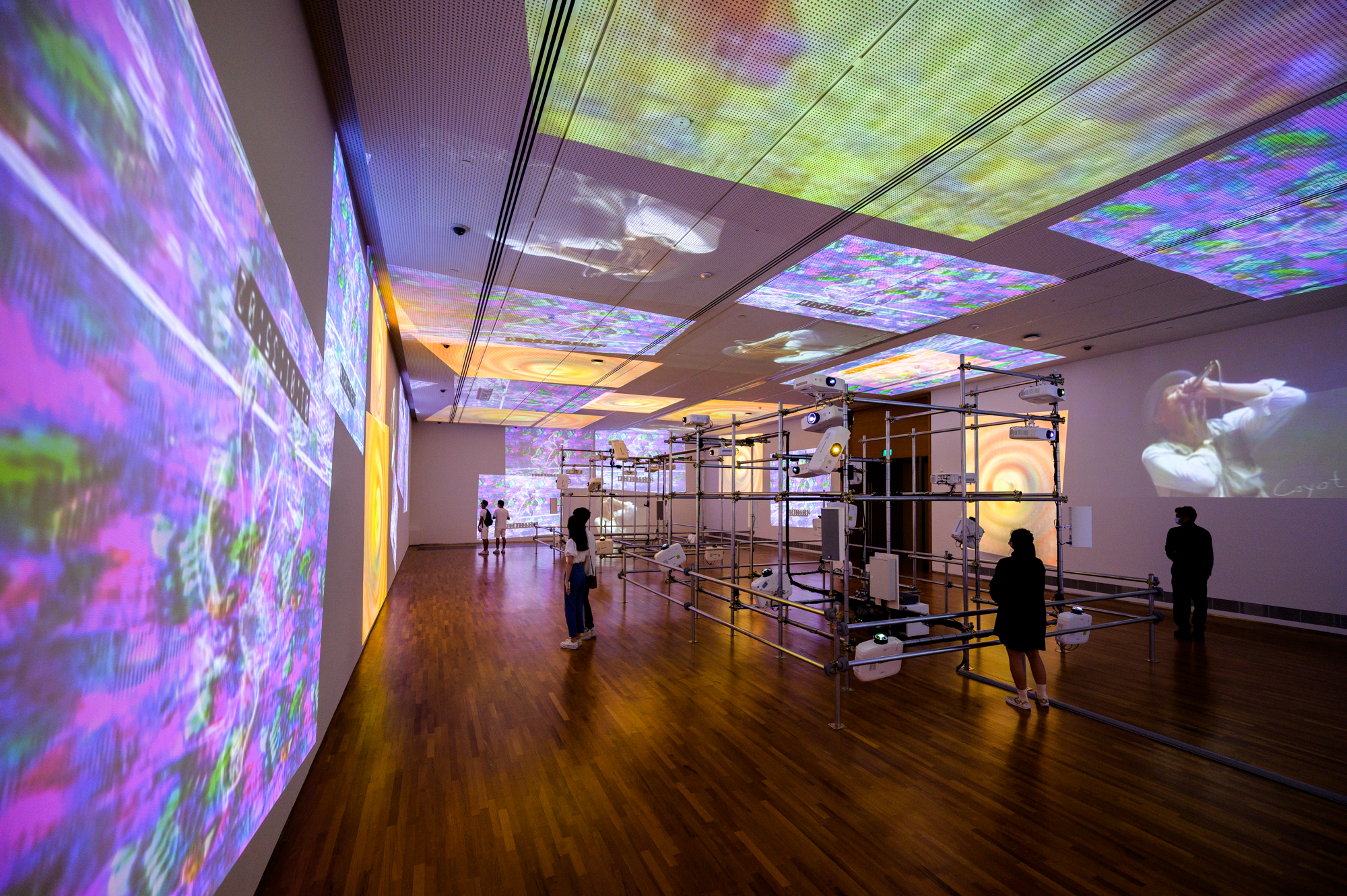Shows
Technologies for Peace: Nam June Paik in Asia
.png)
.png)
Nam June Paik’s traveling retrospective “The Future Is Now” began its journey in 2019 at London’s Tate Modern. It stopped at Amsterdam’s Stedelijk Museum and the San Francisco Museum of Modern Art, before reaching its final destination at the National Gallery Singapore (NGS) last December. ArtAsiaPacific invited NGS curators Clarissa Chikiamco and Roy Ng to discuss the show’s Singapore iteration and unravel the pioneer’s connections to Asia, where his impact can still be felt today.
This is Paik’s first major retrospective in Southeast Asia. Why is it important to show Paik in Singapore and in this region?
Clarissa Chikiamco: Paik is an influential artist globally. Recently, I was giving a tour to an artist from Malaysia who works with video, and he was incredibly excited to see all of these seminal works by Paik in person. Many artists in the region may have only seen his works through books or pictures, so to be able to experience them directly is an unprecedented opportunity. Apart from those who are familiar with his work, we also wanted to introduce Paik to those who don’t know about him because he’s such a significant artist.
Roy Ng: Paik was a prescient artist. A lot of his predictions about how technology would shape the future have been quite accurate; he foretold back in the 1970s that the world would be defined by an electronic superhighway, anticipating the internet, augmented reality, artificial intelligence, and our interconnection through social media. This is something that Paik wasn’t able to immerse himself in back in his time, but he was a visionary artist in trying to imagine new ways of living, opening up the world, and connecting with people across national borders and cultural differences.
.png)
As part of the exhibition, NGS published online essays that delve into Paik’s links with Southeast Asia, through developments in technology, abstraction, and the spirit of Fluxus. How did you flesh these ideas out?
CC: With my essay, “Different Frequencies: Between Abstraction And Technology In Southeast Asia,” I was intrigued by Paik’s connection to abstraction and to Karl Otto Götz, who was an art informel artist from Germany. This provided the impetus for looking at the connection between abstraction and technology in the context of Southeast Asia. I proposed that within abstraction there are precedents to artworks using technology, such as video and television, and in turn analyzed three artists’ works to support my theory: Lee Aguinaldo, Choong Kam Kow, and Lin Hsin Hsin.
RN: In “Fluxus And Southeast Asian Art,” I looked at the legacies of Fluxus in the region today. Fluxus is a radically experimental, international collective of artists from Europe, America, and Asia founded in 1960 by George Maciunas, who invited Paik to join the movement when he was in Germany. They produced anarchic performances with everyday objects and commodities, and harkened back to Marcel Duchamp and Dada’s idea of an anti-art. Fluxus’s concerns regarding the transformation of art toward a more relational form are manifest in works by contemporary Southeast Asian artists, such as Tang Da Wu, Josef Ng, and Rirkrit Tiravanija. These are artists who are inspired by and are engaged in art that is characterized by a sense of spontaneity. The ethos of anti-consumerism and the spirit of collective action that is in their works also resonate with Fluxus’s principles.
.png)
As the last stop of the exhibition, how is the show at NGS different from its previous iterations at Tate Modern, Stedelijk Museum, and the San Francisco Museum of Modern Art?
CC: We have the section “Paik in Asia,” about Paik’s examinations of philosophies and traditions from East Asia, particularly Zen Buddhism. To foreground Zen Buddhism’s influence on Paik, we opened the exhibition with the installation One Candle (also known as Candle TV) (2004) and ended it with One Candle (Candle Projection) (1989). It’s a Zen Buddhist practice to meditate on a candle flame. One of the tenets of Buddhism is that your actions have wider impacts. You can really see this with a lit candle, because when we’re standing, giving tours, and gesturing, the flame in Candle TV flickers due to how we affect the airflow. By your very presence, you have an influence on the work and space.
Another work, Zen for Film (1964) is a 16-mm clear film that is run through a projector. The work has been likened to the “silent piece” 4’33’’ (1952) by American composer John Cage, in which performers are instructed not to play their instruments. Likewise in Zen for Film, viewers may think they’re watching nothing, but as they look at the dust and scratches on the film, they heighten their awareness of their surroundings.
RN: Zen for Film is in tune with the Buddhist condition that one’s personhood is determined by a radical involvement with the world, an increased sensitivity to their environment. So when we see the decay, scratches, and dust on the film reel projected onto the wall, it resonates with Paik’s own interest in Zen. The visitor is forced to take part, engage, and be in active dialogue with the work.
.png)
CC: We also included an essay written by Paik in 1968 that reflects on being a minority artist working in this global context. It was published in the catalogue of his 1974 solo exhibition “Videa ‘n’ Videology 1959–1973” at the Everson Museum of Art in New York. Paik writes, “As a citizen of Korea, a minority nation in the minority continent, therefore necessarily a cynical observer, who picked up three Western and three Eastern languages during 18 years of wandering from Hong Kong via Cairo to Reykjavek, I am particularly sensitive about the East-West problem.”
Though he exhibited transnationally, Paik was conscious about being an Asian artist at the time of the Cold War. He questioned cultural divides and advocated that technology could help enable communication and understanding between cultures. Watching something on video can sometimes be more effective for grasping a perception or experience than reading printed words, for example.
How does Paik’s essay on his peripheral position in the field relate to the position of Southeast Asia in art history and the art world, historically and at present?
CC: There has been a lot of emphasis on Western—namely Euro-North American—narratives of art history and their influence on Southeast Asian art. In recent times, we are more conscious in moving away from binary and hegemonic perspectives to recognize the complexity of interaction and engagement between the region and other parts of the world. Technological advancements with increased ease of access have enabled more interaction and research possibilities conducive to more diverse points of view.
.png)
What could one take away from the exhibition, especially within the global context we’re currently in?
RN: While Paik was an optimist about the possibilities of technology, he also dealt with its implications in a unique and interesting way. In Egg Grows (1984–89), several TV screens show a live-feed of an egg; the reproduced image of the egg overshadows the original. This is emblematic of the postmodern cultural condition where the copy itself has displaced the original, and the way we can access truth or reality—if it even exists—is through its copies, through the simulacrum. The simulacrum is pertinent today when we think about artificial intelligence or the metaverse, and how, accelerated by the context of Covid-19, we have dematerialized ourselves. Right now, we are talking through screens, represented by copies that are being captured by this laptop camera before me.
CC: We want visitors to reflect on the history of technology but also on technology today, and how we can use technology to better society and bring the world together, rather than divide. This is a critical question to ask ourselves at this time, when the world is so polarized.
It’s especially salient because of what’s happening now in Ukraine. There are these tensions of east and west like it’s the Cold War all over again, and the Cold War was a very important context in which Paik worked. He was an advocate for peace and was interested in how technology can bring humanity together. All the questions he raised about technology are still relevant today, even if technology has changed. Now, we’re watching the war in Ukraine unfold through our phones, through social media—how can we actually respond to the situation given the tools that we have? It’s a double-edged sword: some people have responded by sending help but there are others who have tried to exploit the situation for views.
Paik once said, “Television has attacked us for a lifetime, now we fight back.” He was responding to the situation where you had to watch what was broadcast on TV, controlled by those who have the power in technology. Now, you can argue that so much of technology has been democratized but we can also see a flipside where we are being controlled by algorithms and large institutions like Meta. How do we strike back?
Nam June Paik’s “The Future Is Now” is on view at the National Gallery Singapore from December 10, 2021 until March 27, 2022.
Nicole M. Nepomuceno is ArtAsiaPacific’s assistant editor.







